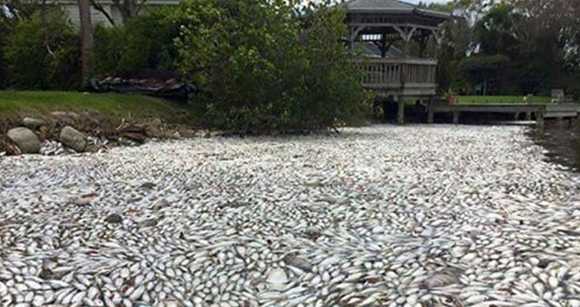Steve Crisafulli: Short- and Long-Term Solutions for the Indian River Lagoon
By House Speaker Steve Crisafulli // March 31, 2016

BREVARD COUNTY, FLORIDA — Our community is being afflicted by an unexpected and troublesome event known as brown tide. Thankfully, it is not a health threat to our families or visitors, but the impact to our environment is sudden, widespread, and horrible.
I want to thank Gov. Rick Scott, the Department of Environmental Protection, the Florida Fish and Wildlife Commission, the St. Johns River Water Management District and the Florida Department of Health for their swift and thorough response to the situation in our community.
I have personally traveled to the affected areas and have witnessed firsthand the efforts that are underway to clean up and combat this threat.
My office is working closely with the lead agency (FWC) to ensure a swift short-term action plan is deployed, and a long-term management plan is developed to reduce nutrients in the Lagoon.
Local, state and federal agencies will continue to work together to find answers to the cause of this brown tide and to identify what can be done in the future to limit or avoid similar events and build on restoration efforts already underway. DEP and the SJRWMD have deployed staff and boats to assist Brevard County with their local recovery and cleanup efforts, and local DOH offices continue to monitor for human health impacts and encourage public safety.
Short-term response efforts include:
FWC is serving as the lead agency for documenting and determining the cause of fish and wildlife mortality events.
*On March 19, FWC began taking fish and water samples to analyze at the Fish and Wildlife Research Institute in St. Petersburg.
*Current data and historic analysis indicate fish impacts appear to be the result of low dissolved oxygen conditions associated with the brown algae bloom.
*To help them respond to this algal bloom and other wildlife events, FWC’s hotline allows the public to report directly to researchers the locations of fish kills and diseased or abnormal fish by calling toll-free at 800-636-0511.
*The SJRWMD continues to collect water quality monitoring samples and track movement and trends in the bloom activity.
*The water management district routinely monitors water quality in the Indian River Lagoon and its tributaries, collecting and managing data from 58 sites monthly to provide reliable data about current water quality conditions.
*To monitor specifically for algae species, the SJRWMD partners with FWC and the University of Florida to sample and analyze five sites monthly and provides additional event-driven support when algal blooms are reported.
*In addition, the district maintains five stations that provide continuous water quality monitoring, sending the information electronically to the agency’s headquarters.
In addition to on-the-ground response and monitoring efforts, state and local agencies are also focusing on longer-term water quality restoration efforts for the Indian River Lagoon. These restoration projects and management strategies are essential to reducing nitrogen and phosphorous levels, which will help to decrease the intensity and duration of algal bloom events.
Long-term restoration efforts include:
*Including the recently signed Florida First budget, the state will have invested nearly $80 million dollars in projects in Brevard County to restore the lagoon over a three-year span.
*Funding in this fiscal year includes $26 million from the Florida First budget that will be invested in 10 water quality improvement projects, including $21.5 million for muck dredging – a key component of long-term lagoon restoration.
*To address elevated levels of nutrients in the lagoon, in 2013 at the direction of the Florida Legislature, DEP adopted three basin management action plans (BMAPs) to implement the projects and activities necessary to bring the lagoon back to health. In addition, the Department has adopted the St. Lucie BMAP, which will also help the Southern Indian River Lagoon. To date, the stakeholders have achieved all obligations outlined in the BMAPs.
*Several projects have been completed in recent months that will bring relief to the Indian River Lagoon in time. Recently, SJRWMD activated large scale stormwater treatment and control projects on the C-1 Canal and at the Wheeler Stormwater Park.
*DEP and the district are also working to expedite a number of projects that can help improve the health of the lagoon. Recently, innovative dispersed water pilot projects have been approved in Indian River County that are projected to keep thousands of pounds of nutrients from reaching the lagoon.
*This session, the Legislature passed the first comprehensive water policy in decades. SB 552 requires the state to use scientifically sound solutions to address water quality and supply issues in a statewide manner.
*The Florida Legislature also passed the “Legacy Florida Act” to establish dedicated funding for the restoration of the Everglades, our springs and Lake Apopka. The total funding for Legacy Florida in the 2016-17 General Appropriations Act is $258 million.
My office will continue to stay in touch with the Department of Environmental Protection, the Florida Fish and Wildlife Commission, and the St. Johns River Water Management District as we look for the causes of the fish kill and solutions for preventing such calamities from occurring in the future.
The health, safety, and quality of our environment are my highest priorities. I will continue to work with officials at the state and local level to ensure swift cleanup and long-term prevention of future algae blooms in our community.
















